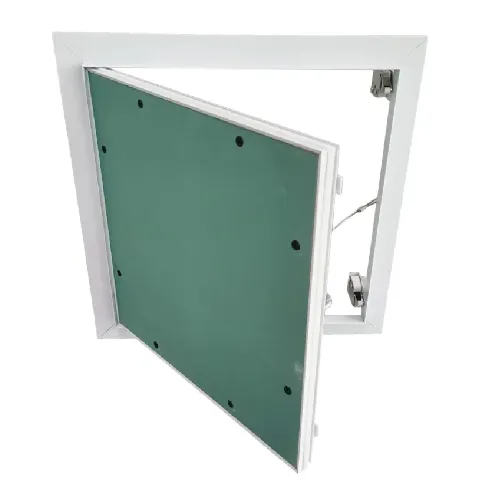- Afrikaans
- Albanian
- Amharic
- Arabic
- Armenian
- Azerbaijani
- Basque
- Belarusian
- Bengali
- Bosnian
- Bulgarian
- Catalan
- Cebuano
- Corsican
- Croatian
- Czech
- Danish
- Dutch
- English
- Esperanto
- Estonian
- French
- German
- Greek
- Hindi
- Indonesian
- irish
- Italian
- Japanese
- Korean
- Lao
- Malay
- Myanmar
- Norwegian
- Norwegian
- Polish
- Portuguese
- Romanian
- Russian
- Serbian
- Spanish
- Swedish
- Thai
- Turkish
- Ukrainian
- Uzbek
- Vietnamese
Гру . 13, 2024 02:39 Back to list
gypsum board vs pvc ceiling
Gypsum Board vs PVC Ceiling A Comprehensive Comparison
When it comes to interior design and construction, choosing the right ceiling materials is crucial for both aesthetics and functionality. Among the popular options available in the market today are gypsum board and PVC (polyvinyl chloride) ceilings. Each has its unique set of features, advantages, and disadvantages. This article aims to provide a comprehensive comparison of gypsum board ceilings and PVC ceilings to help you make an informed decision.
Gypsum Board Ceilings
Gypsum board, often referred to as drywall or plasterboard, is made from a core of gypsum plaster sandwiched between two sheets of heavy paper. It is widely used in residential and commercial buildings for its versatility and ease of installation.
Advantages
1. Sound Insulation Gypsum boards are excellent for soundproofing. Their density helps to minimize noise transfer between rooms, making them ideal for home theaters or multi-family residences.
2. Fire Resistance Gypsum is inherently fire-resistant due to its mineral composition. This property can significantly enhance the safety of a building, as it can slow down the spread of fire.
3. Aesthetic Flexibility Gypsum ceilings can be seamlessly finished and painted, allowing for various design possibilities. They can also be easily cut into shapes for custom designs.
4. Eco-Friendly Gypsum board is made from natural materials, which makes it a sustainable choice. Many products also incorporate recycled materials.
Disadvantages
1. Moisture Sensitivity Gypsum board is susceptible to moisture damage and can warp or develop mold in humid environments unless specifically treated.
2. Complex Installation While gypsum boards can be installed relatively easily by experienced professionals, the process can be labor-intensive and requires proper finishing techniques.
gypsum board vs pvc ceiling

PVC Ceilings
On the other hand, PVC ceilings are made from polyvinyl chloride, a type of plastic that has gained popularity for its waterproof and low-maintenance characteristics.
Advantages
1. Water Resistance PVC ceilings are impervious to water, making them ideal for areas prone to moisture such as bathrooms and kitchens. They do not warp, discolor, or develop mold when exposed to humidity.
2. Lightweight and Easy to Install PVC panels are lightweight, which simplifies the installation process. They can be fixed to existing ceilings without the need for additional support.
3. Variety of Designs PVC ceilings come in various colors, textures, and designs, offering an extensive range of options to achieve the desired aesthetic.
4. Low Maintenance Cleaning PVC ceilings is easy; a simple wipe with a damp cloth is usually sufficient to remove dust and stains.
Disadvantages
1. Sound Insulation Compared to gypsum boards, PVC ceilings offer less sound insulation, which might be a drawback in environments where noise control is essential.
2. Environmental Concerns PVC is a type of plastic, and its production and disposal raise environmental concerns. However, some manufacturers have developed more eco-friendly versions.
3. Heat Sensitivity PVC can suffer from deformation when exposed to high temperatures, which limits its applicability in areas with significant heat sources.
Conclusion
In summary, the choice between gypsum board and PVC ceilings largely depends on the specific needs and conditions of your project. Gypsum board ceilings provide excellent sound insulation and fire resistance, making them suitable for a variety of applications. On the other hand, PVC ceilings excel in moisture-prone areas and require less maintenance, offering a practical solution for homeowners looking for convenience. Carefully consider the advantages and disadvantages of each material to find the best fit for your space, keeping in mind factors such as durability, aesthetics, and environmental impact.
-
Transform Interiors with PVC Gypsum Ceiling: A Stylish, Durable, and Moisture-Resistant SolutionNewsMay.19,2025
-
The Smart Interior Upgrade: Discover the Durability and Versatility of Gypsum Ceiling Access Panel SolutionsNewsMay.19,2025
-
The Smart Choice for Interior Design: Discover the Value of PVC Gypsum Ceiling SolutionsNewsMay.19,2025
-
Mineral Fiber Ceiling Tiles: The Smart Blend of Performance and AestheticsNewsMay.19,2025
-
Mineral Fiber Ceiling Tiles: The Superior Choice Over Gypsum for Sound and Fire SafetyNewsMay.19,2025
-
Mineral Fiber Ceiling Tiles: Eco-Friendly Strength and Style for Every CeilingNewsMay.19,2025







